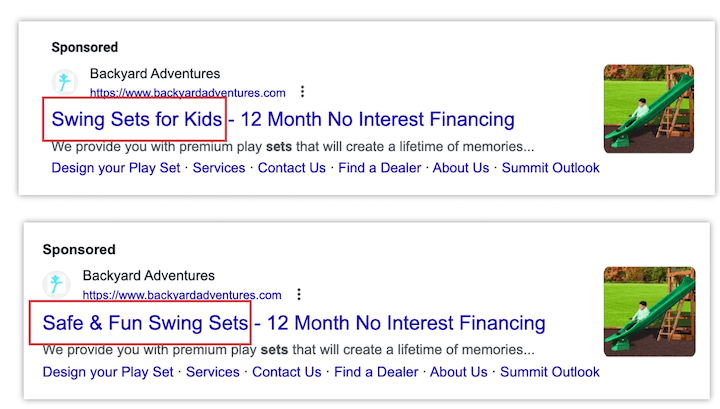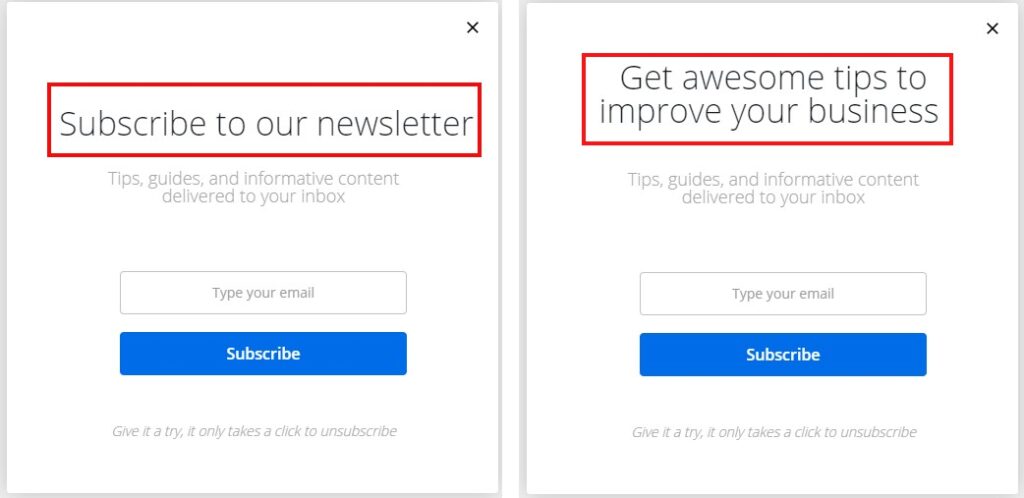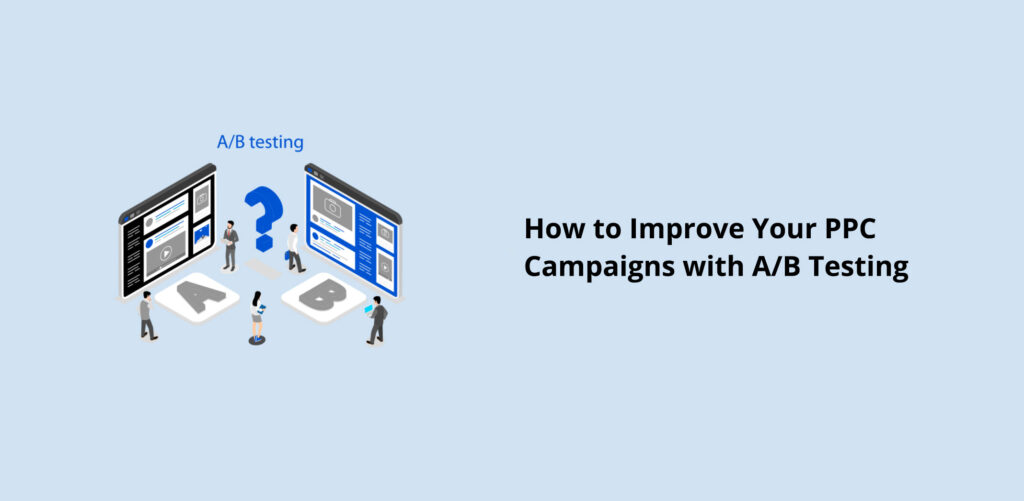The performance of your PPC campaigns can make or break your digital marketing success. A/B testing, also known as split testing, is a powerful way to fine-tune your PPC strategies to maximize ROI. Here’s a step-by-step guide on how to leverage A/B testing in your PPC campaigns:
Understanding A/B Testing
A/B testing is a method of comparing two versions of a webpage, app, ad copies or creatives to determine which one performs better. In the context of PPC (Pay-Per-Click), A/B testing allows marketers to assess various ad elements such as headlines, images, calls to action (CTAs), or landing pages.
Step 1: Identify Your Goals
Your testing should be driven by specific objectives like increasing click-through rates (CTR), and boosting conversions, or reducing bounce rates.
Example: If your primary goal is to enhance CTR, you may focus on altering the headline or image to make them more compelling.
Step 2: Choose What to Test

Pick an element in your ad that you believe could influence the success of your campaign. Selecting what to test is a vital step in A/B testing and should align with your campaign goals.
Understand Your Goals: Are you looking to boost conversions, increase clicks, or something else? Your testing element should relate directly to these goals.
Select the Key Component: Depending on your objective, you may test various elements:
- For Attention: Consider headlines.
- For Engagement: Look at ad copy or visuals.
- For Conversions: Focus on CTAs or landing page design.
Example:
If your aim is to enhance conversions, you might choose to test different CTAs like “Buy Now” versus “Shop Today,” or different landing page designs to find out which encourages more purchases. By concentrating on the elements that directly influence your specific goal, you create a more targeted and effective testing strategy.
If your aim is to enhance conversions, you might choose to test different CTAs like “Buy Now” versus “Shop Today,” or different landing page designs to find out which encourages more purchases. By concentrating on the elements that directly influence your specific goal, you create a more targeted and effective testing strategy.
Step 3: Create Variations
Creating variations means formulating two distinct versions of the particular ad element you’re evaluating. This step is essential for comparing performance and identifying improvements.
Variation A –
The Control Version: This is your existing or current version. It’s what you’ve been using, and it’s the baseline against which Variation B will be compared.
Variation B – The Test Version: This includes the changes you think might lead to better results. Whether it’s a different headline, altered ad copy, or new visuals, this variation embodies your proposed improvements.
Variation B – The Test Version: This includes the changes you think might lead to better results. Whether it’s a different headline, altered ad copy, or new visuals, this variation embodies your proposed improvements.
For Example:
If you wish to test ad copy, Variation A might retain your existing wording, while Variation B introduces a fresh approach. For instance, Variation A could be a straightforward product description, whereas Variation B could include a more assertive promotional message like “Limited Time Offer” to encourage urgency.
If you wish to test ad copy, Variation A might retain your existing wording, while Variation B introduces a fresh approach. For instance, Variation A could be a straightforward product description, whereas Variation B could include a more assertive promotional message like “Limited Time Offer” to encourage urgency.
Step 4: Set Up the Test
Setting up the A/B test involves using tools or platforms to present both variations to your target audience. This setup is critical in ensuring that the comparison is fair and unbiased.
- Choose a Testing Platform: Platforms like Google Ads have built-in functionalities for A/B testing. Select one that aligns with your needs.
- Divide the Audience: Your audience should be split evenly between the two variations. If one version is seen by more people, it might skew the results.
- Control Other Factors: Make sure other factors that might affect the outcome (e.g., time of day, geographic location) are consistent for both groups.

Let’s say, If you are testing two different headlines, you might set up the test so that 50% of your audience sees Variation A (the existing headline) and 50% sees Variation B (the new headline). This ensures that any difference in performance can reasonably be attributed to the changes in the headline itself rather than external factors or audience biases.
Step 5: Monitor and Analyze Results
Monitoring and analyzing the results is a crucial phase where you observe how both variations perform over time. Here’s how you can do this:
- Use Analytical Tools: Tools like Google Analytics are essential in tracking performance. They allow you to see real-time data and insights on how both variations perform.
- Select Relevant Metrics: Focus on the metrics that directly relate to your goals. For example, if your goal is to increase click-through rates, pay close attention to that specific metric.
- Give it Time: A/B testing requires a significant amount of data to provide reliable insights. Running the test for a short period of time might lead to inconclusive or skewed results. Ensure you have enough impressions or interactions for a valid comparison.
- Evaluate the Data: Compare both versions to see which performs better in relation to your goals. Look for significant differences that can guide your future strategies.

Example:
If you are testing different CTAs to improve conversion rates, you would specifically monitor the conversion rate metric over a set period, analyzing which CTA leads to more conversions.
If you are testing different CTAs to improve conversion rates, you would specifically monitor the conversion rate metric over a set period, analyzing which CTA leads to more conversions.
Step 6: Implement Insights
This step involves taking the insights you’ve gained from the A/B test and applying them to your campaign.
- Choose the Winning Variation: Determine which version, A or B, met or exceeded the objectives set at the beginning of the test.
- Make Necessary Changes: Implement the winning version in your campaign. This might mean changing the ad copy, visuals, landing page design, etc., based on what was tested.
- Consider Continuous Testing: The process doesn’t have to end with one test. Continuous testing and iteration can lead to incremental improvements over time. Consider testing other elements or revisiting previously tested elements with fresh ideas.
- Document the Learnings: Keep a record of what you’ve learned. It helps build a knowledge base that can guide future tests and broader marketing strategies.
For Example:
If Variation B’s aggressive promotional message increased click-through rates by 10%, you would replace Variation A with Variation B in your live campaign. Consider using similar aggressive promotional messages in other parts of your advertising strategy, backed by the evidence from the A/B test.
If Variation B’s aggressive promotional message increased click-through rates by 10%, you would replace Variation A with Variation B in your live campaign. Consider using similar aggressive promotional messages in other parts of your advertising strategy, backed by the evidence from the A/B test.
It’s essential to share these insights with everyone. Often, A/B testing results are kept limited, which means the whole team misses out on important information. Keeping a shared record helps the whole organization learn from both successes and mistakes, making sure these insights are used more widely.
Benefits of A/B Testing in PPC
Businesses face a myriad of challenges: B2B companies grapple with unqualified leads, eCommerce platforms wrestle with cart abandonment, and media houses cope with low engagement. Many of these issues stem from conversion funnel leaks and drop-offs on payment pages. A/B testing can be an invaluable tool to address these problems. Here’s why:
- Address Visitor Pain Points: Every visitor has a specific goal in mind. Sometimes, unclear copy or elusive CTAs hinder their journey, leading to poor user experiences and ultimately impacting conversion rates. By utilizing tools like heatmaps and Google Analytics, A/B testing can address these issues across diverse sectors.
- Optimize ROI from Existing Traffic: Acquiring quality website traffic is costly. A/B testing enables businesses to maximize their conversions from current visitors without incurring additional acquisition costs. Even slight website tweaks can significantly bolster overall conversions.
- Minimize Bounce Rates: Bounce rate is a critical website performance metric. Various factors can boost it: confusing navigation, excessive options, or unclear content. A/B testing helps businesses identify the best version of their website elements, enhancing user experience and potentially converting more visitors.
- Facilitate Low-risk Modifications: A/B testing promotes making gradual changes, minimizing the risk of harming your existing conversion rate. For instance, if you’re contemplating altering product descriptions, A/B testing can gauge visitor reactions before implementing the change. This method ensures changes are well-received and effective.
- Achieve Quantifiable Improvements: A/B testing is grounded in data, eliminating guesswork. This allows businesses to discern clear “winners” in their tests based on solid metrics such as click-through rates or time spent on pages.
- Guide Effective Website Redesigns: A/B testing aids in making informed decisions during website redesigns. Whether it’s tweaking a CTA or overhauling an entire page, data should drive these decisions. Even after implementing changes, continuous testing ensures the final version remains optimal for users.
In essence, A/B testing is a strategic tool that, when employed effectively, can bring about measurable improvements in various aspects of a website, ensuring it serves its audience in the best possible way.

Best Practices for Effective A/B Testing
When conducting A/B tests on your pay-per-click (PPC) ad campaigns, adhering to certain best practices can significantly enhance your results. Here’s what you should consider:
1. Simultaneous vs. Sequential Testing
Simultaneous testing involves running both variations of a test at the same time, whereas sequential testing means examining one variation first, then the other at a later time. The key difference lies in how they are exposed to external conditions.
Importance:
- Uniform Conditions: With simultaneous testing, variations are exposed to the same external factors, ensuring a level playing field. This is particularly crucial when these external factors, like seasons, holidays, or global events, might significantly impact user behavior.
- Avoiding Time-Based Bias: Sequential testing risks introducing biases because the time at which each variation is tested might have different prevailing conditions or user behaviors. There might be shifts in market trends, industry news, or even changes in competitors’ strategies between the two testing phases.
Example:
Suppose you’re testing ad copy related to a product sale. If you use simultaneous testing during the holiday season, both variations will be influenced equally by the festive shopping atmosphere. However, with sequential testing, if Variation A is tested in early December and Variation B in late December, Variation B might experience different user behaviors due to end-of-month or end-of-year sentiments, potentially skewing results.
Suppose you’re testing ad copy related to a product sale. If you use simultaneous testing during the holiday season, both variations will be influenced equally by the festive shopping atmosphere. However, with sequential testing, if Variation A is tested in early December and Variation B in late December, Variation B might experience different user behaviors due to end-of-month or end-of-year sentiments, potentially skewing results.
2. Single-Element Testing
Concentrating on a single component during testing ensures the clarity of which specific change influenced the performance.
Importance: Testing several variables simultaneously can muddy the waters, making it challenging to identify the actual change responsible for the varied outcomes. A singular focus eliminates such uncertainty.
Example: Consider two ad variations: Variation A flaunts a red call-to-action button, whereas Variation B showcases a blue button paired with a revised text. If Variation B outperforms A, you’re left wondering: was it the color or the text that resonated more? Assessing just one aspect at a time sidesteps this confusion.
Note for Marketers: Prioritize single-element testing if your website boasts substantial traffic. For those with limited traffic, remember that subtle, individual changes may only produce modest shifts in outcomes.
3. Frequent Testing
Adopting a continuous approach to testing allows for ongoing optimization.
Importance: Markets and consumer behavior are always evolving. Regular testing helps you stay aligned with these changes.
Example: If you are running a year-long campaign, don’t just test at the beginning. Regular updates to your headlines, images, or landing pages can keep your campaign fresh and effective.
4. Data-Driven Decisions
Making decisions based on actual data eliminates personal bias and leads to more reliable outcomes.
Importance: Personal preference and intuition can lead to decisions that don’t reflect actual customer behavior. Trusting the data ensures that changes are grounded in real-world performance.
Example: Even if you personally prefer the design of Variation B, if the data shows that Variation A has a 15% higher conversion rate, that’s the choice that will likely lead to better results.
5. Sufficient Run Time
Ensuring your A/B test runs for an adequate period is crucial for obtaining consistent and reliable results.
Importance:
Abruptly ending a test might only reflect momentary shifts in user interactions, leading to distorted findings.
Example:
Imagine you’re evaluating two different ad descriptions – one focusing on the product’s eco-friendliness and the other emphasizing its affordability. If you conclude the test within just three days, a sudden surge in eco-conscious discussions on social media during that period might temporarily boost the first ad’s performance. By allowing the test to run for a more extended period, you can ascertain which description genuinely resonates more with the audience over time.
It’s advisable to round off your test to the closest week. For instance, if your test is slated for 17 days, extend it to 21. Set a defined timeline even before your test commences.
By adhering to these optimized practices and integrating the practical examples provided, your A/B testing approach will be fortified, ensuring your PPC campaigns reach their maximum potential.
Ending Note
A/B testing is more than just a method; it’s a pathway to refine your PPC campaigns, fostering engagement and success. Here’s what you should remember:
- Careful Planning: A/B testing is not a set-it-and-forget-it process. Thoughtful planning and execution are essential.
- Continuous Refinement: Don’t stop at one test. Constantly iterate based on real user interactions to hone your campaigns.
- Data-Driven Approach: Embrace data to guide your decisions, transcending intuition and personal bias.
- Practical Application: It’s not just about theory; apply these insights to create truly engaging PPC campaigns.
Looking to elevate your PPC strategies? A/B testing stands as a substantial avenue. Step into data-driven marketing and commence your journey toward optimized ads. The insights and practices shared in this guide are not mere suggestions but pivotal steps toward achieving more compelling and lucrative advertising.
To make the most out of your A/B tests and maximize conversion rates, white label PPC management can offer tools and expertise to scale your campaigns efficiently.

